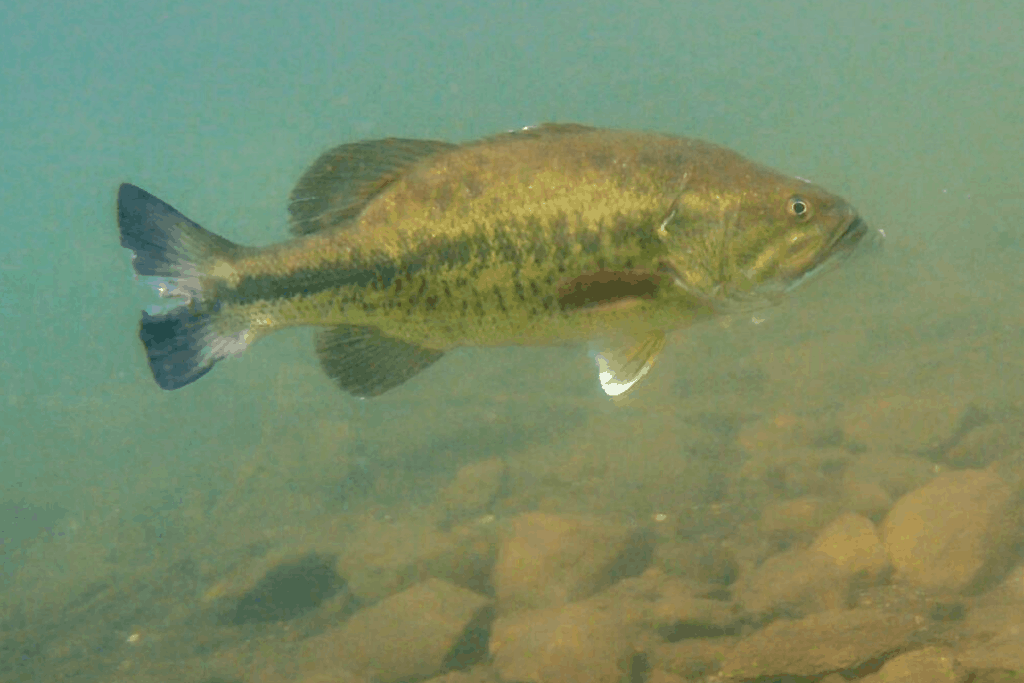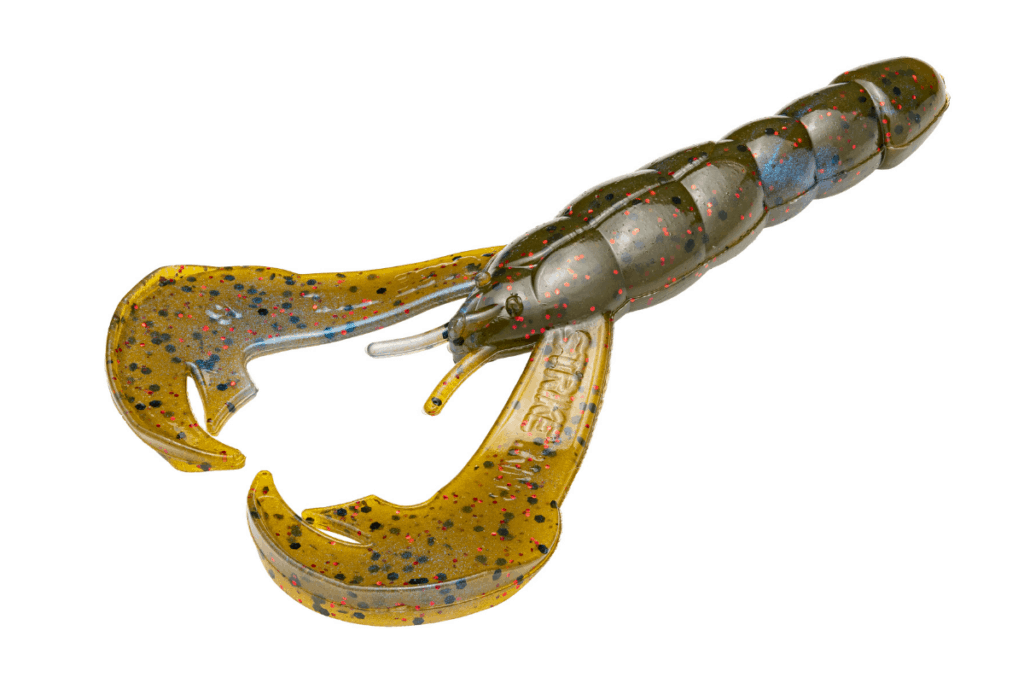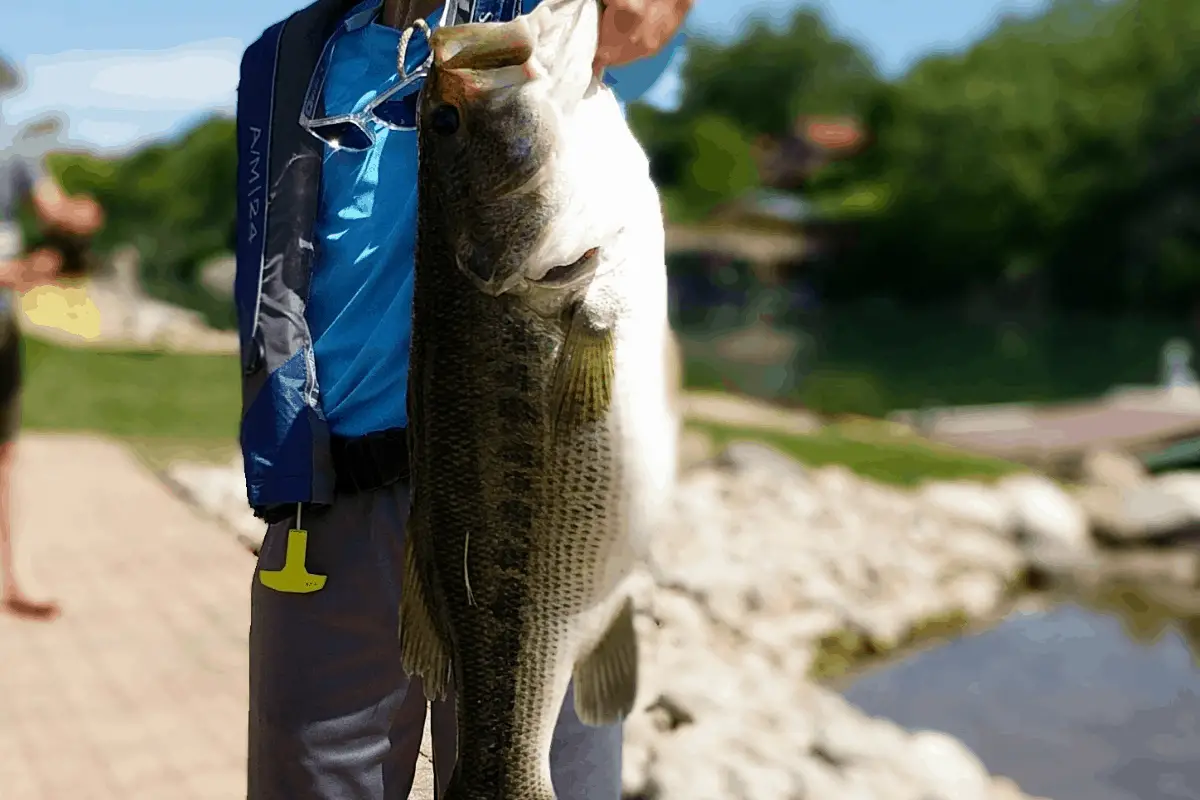Trophy bass behave differently. These lunkers have beaten the odds and grown to a size that make anglers hit the water again-and-again in anticipation. Through years of chasing bass all over the country, I have found there are six factors that these giant bass have in common.
Giant bass share similar behavioral characteristics:
- Often found slightly deeper than their smaller counterparts
- Eat prey that offers more calories
- Bites are almost imperceptible
- Tend to use isolated cover
- Do not chase prey as far
- Retain memory from negative stimulus
Understanding these traits can up-the-odds of landing a new personal best
What is the Quality of Bass in Your Lake?
This is the first item to take into consideration when on the prowl for trophy bass. Every lake is different. Food sources, ecosystems, and fishing pressure are a few of the factors that can alter the number and quality of trophy sized bass in a given waterway.
My home lake is a perfect example. No matter how long I fish the odds of a ten-pounder hooking up on my lure are almost zero. A true trophy in the waters I fish is any bass that breaks the five pound mark.
Yet, if you live in Florida than a five pound largemouth is far from a monster catch.

1. Find Trophy Bass in Slightly Deeper Water
The key component here is the term “slightly” deeper.
A good way to think about this is where we often position our boat when fishing. We like to maneuver down the shoreline within casting distance of the bank. Often the bigger fish we are looking for are hanging below the boat. Literally.
This has to do with light penetration.
The distance that the sunlight pushes into the water column depends on the clarity of the water. If the lake or river you are fishing has muddy water, than fishing shallow is the way to go. Those bass, large and small, will pull up alongside hard cover.
If the water is clear or slightly stained, look for that depth where the sunlight starts to fall off. Another way to check for the right zone is to throw a lure out, like a spinnerbait, and reel it back to the boat. At what depth do you no longer see the lure? Where is it just out of sight?
This is a key place to start.
Find cover or hard structure that intersects with that depth zone and you are now searching an area where bigger fish like to live. Maybe even a true trophy bass.

2. Caloric Intake is Critical for Trophy Bass Growth
Animals have great instincts. One of those innate abilities is making sure that the effort put forth to capture prey does not outweigh the benefit gained. In simpler terms, a trophy bass must intake more calories than they burn by chasing around prey. It is impossible to get to a true trophy size any other way.
This leads us back to the old adage, big lures catch big bass.
I like to think about it this way – what is the forage like?
If your lake or river is stuffed with sunfish, I am going to fish a lure that is on the upper side of the typical bluegill swimming in that lake. The lure doesn’t have to be monster-sized, but instead, a good meal.
Lure profile is key.
A simple switch from a twin-tail grub trailer to a craw trailer on a swim jig may mean the difference between a 2-pounder and a 5-pounder.
Most soft plastic craw trailers have a bulkier profile and mimic a larger sunfish swimming through the water column.
The same thought process can be applied to bottom-bouncing lures as well. A big bass is going to get more benefit from eating a large crawfish.
The one exception to this rule involves the ease of the meal.
If a ten-pound bass is hanging under a dock and a small bluegill is careless enough to swim inches away – there is a good chance that lunker bass is going to flare those gills and inhale that sunfish.
The net benefit is the same though. Very little energy was exerted.
3. The Bites from a Giant Bass are Almost Imperceptible
Spending lots of time filming bass underwater has made this clear.
A big bass seldom pursues and attacks by moving right through the area the prey was sitting. Big fish get close to a meal and then flare their massive gills.
This creates a vacuum-like situation. The prey is then pulled into the mouth of the bass.
That lunker barely needed to move.
The “thump” that we feel as anglers is the lure hitting the inside of the mouth. The larger the bass, the more slight the actual bite might be.
I once caught a beastly smallmouth on Lake Erie while practicing for a Bassmaster Open event out of Buffalo, NY. My bump board was 22” long and the entire tail of that smallie hung off the end of the measuring stick.
The bite from that fish was so slight the only reason I felt it was due to the weather. Lake Erie happened to be flat calm with no wind. The glass-like surface allowed me to see my line twitch. I set the hook and I was rewarded with the largest smallmouth I have ever seen in person. Thank goodness it was on my line!
That is one reason I love to use hi-vis braid when the situation is right. The ability to see the tiniest of movements in the line is amplified by the brighter colors. A low-vis leader is needed in clearer water situation as well as the ability to tie a good braid-to-leader knot – but the benefits are worth it.
4. Trophy Bass Tend to Use Isolated Cover
We know that big bass love thick and nasty cover. This is true, but the biggest bass I have caught have one key trait in common – they came from isolated cover.
That doesn’t necessarily mean they are alone, but the places they tend to prefer fall under what I call the “King-of-the-Hill” syndrome. They like to dominate the area they are hanging out in.
Isolated cover varies from lake-to-lake, but a good starting point is to fish those locations you may normally pass over.
That single branch, that small clump of weeds, that dilapidated dock sitting on its own, the single boulder on a tapering point are all good examples of what to look for.
Last spring, I was filming some lures underwater with our submersible drone. The ROV maneuvered by a tiny branch that I have motored by a thousand times.
Guess what?
Yep. A big-ol bass was hanging out on that miniscule stick. There were a couple of other fish there too, but this one ruled the cover.
As anglers, we get quite in-tune with what looks good. We need to practice looking at those places that are often off the radar. I think you will find these areas are magnets for bigger bass.
5. Casting Accuracy is Key to Catching Trophy Bass
This truth goes back to the idea of not burning more calories than you bring in.
We have all had those little one-pounders chase our lures a country-mile. They are willing to chase, chase, and chase some more.
A trophy bass is by far less apt to come bursting out from under a dock and swipe a lure fifty feet away. It is more likely that the lure will need to be placed in the perfect position to appear as an easy meal for that lunker.
This means we need to place those lures where we want them. Missing a stump by two feet will likely result in a blown opportunity to catch that big fish sitting there. You may catch a smaller bass, but that trophy largemouth may never reveal that they were in the vicinity.
The idea of the “easy meal” is a good approach to take for all of bass fishing, but especially when targeting bigger fish.
When our lures look like struggling baitfish, a craw that is not paying attention, or a sunfish that is haphazardly cruising around, the feeding instincts of predators kick in.
It is difficult for us to avoid eating a potato chip if someone places the bag right next to us. Take this same approach to your bass fishing and not only will you catch more fish, but bigger bites will soon follow.
6. Bass Remember Negative Stimulus
Even though our favorite gamefish may have a tiny brain, that brain is intricately wired to survival instincts.
This is quite noticeable in trophy bass. Remember, they have grown to a size few ever get to. These lunkers have beaten the odds because their instincts are sharp.
This applies to us as anglers in the form of fishing pressure.
If your home waters tend to see a certain lure or presentation used often, I would be throwing something else. If a bass associates a lure with pain or stress, they are less likely to attack it again.
A video by Edwin Evers, a Major League Fishing Pro, discusses this very topic. The fisheries biologist he was sharing his boat with mentioned that his studies have shown that bass will avoid a lure up to six months after being hooked by it.
I was shocked. Six months. That is a long time.
If you have a small pond on your property you may have noticed this behavior. Tossing a new or different lure into a pond often can trigger a great day of catching. Keep using that lure and soon it will lose the magic it once had.
That is the negative stimulus from the bass being associated with that lure.
Throw something different than the popular lure on your home waters the odds of catching a big bass go way up.
Final Thoughts
Those big fish are out there. Understanding these key characteristics can up-the-odds of finding one on the end of your line.
- Trophy bass often use slightly deeper water
- They devour prey that gives them more calories than they burn
- Bites from big bass are almost imperceptible
- Big bass tend to use isolated cover
- Trophy fish do not like to chase baits as far
- Lunker bass retain a memory from negative stimulus
Tight lines. Be safe and make sure to encourage someone today. You never know how you may change their life forever.
Isaiah 6:8

